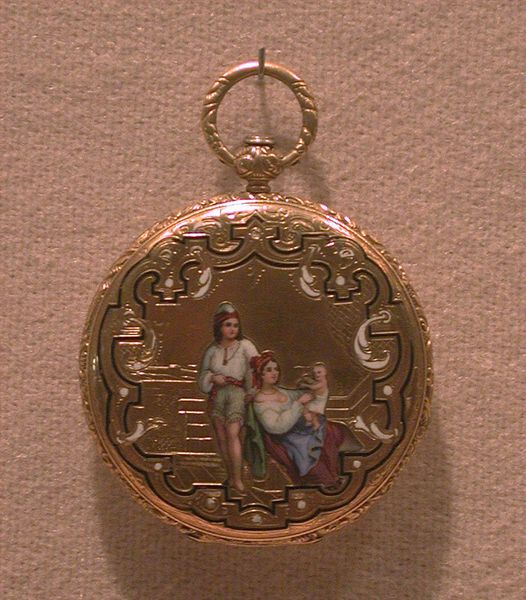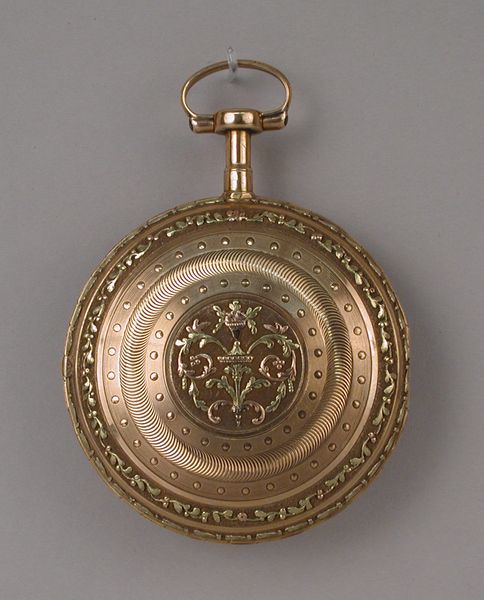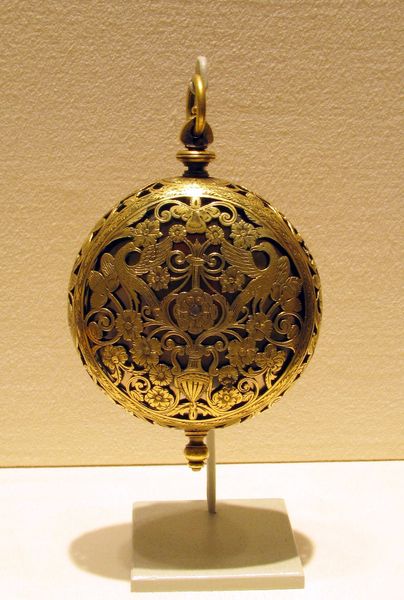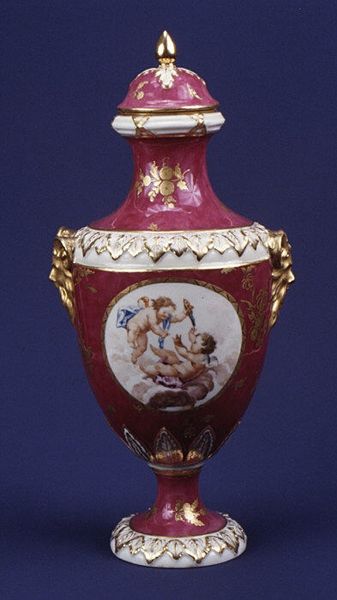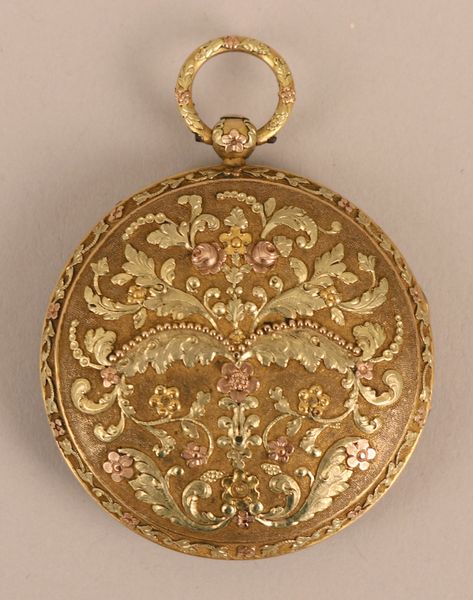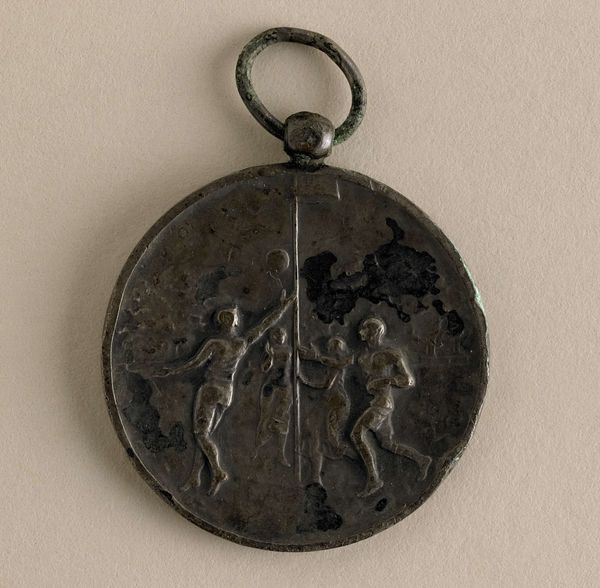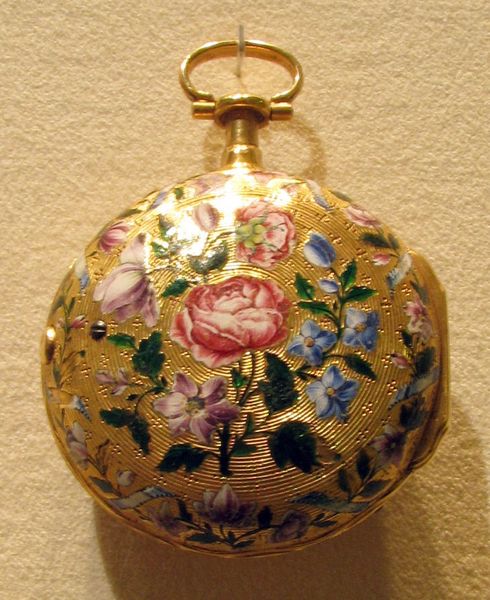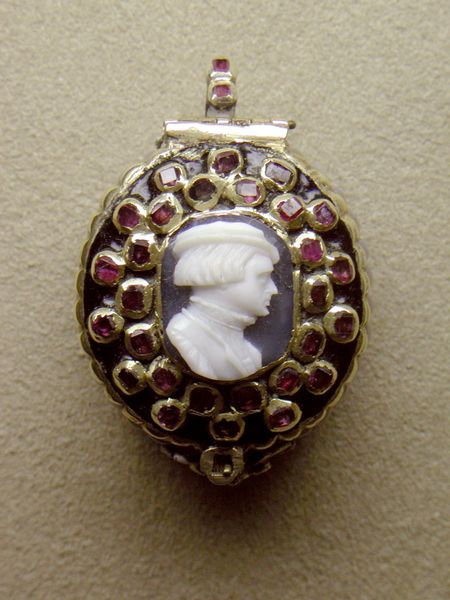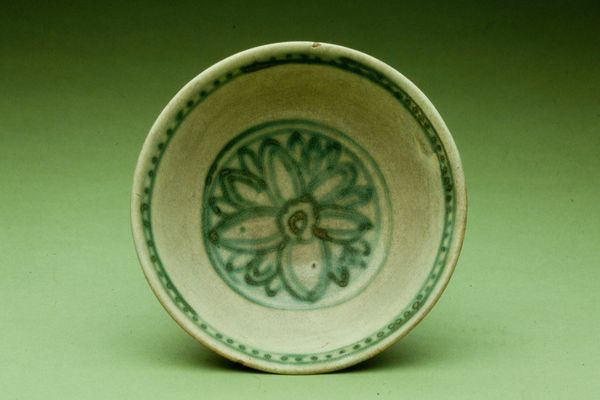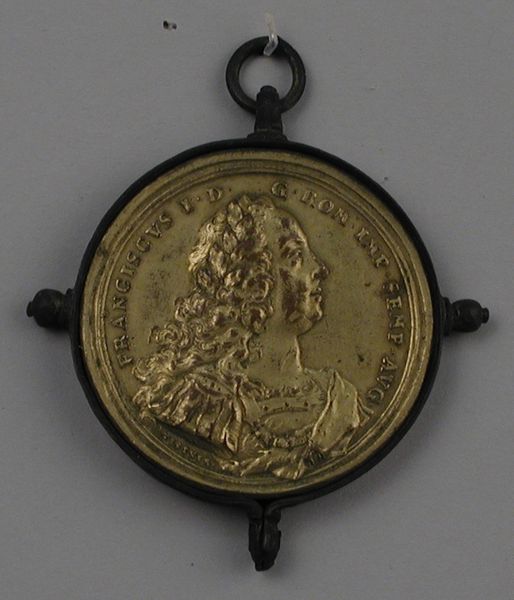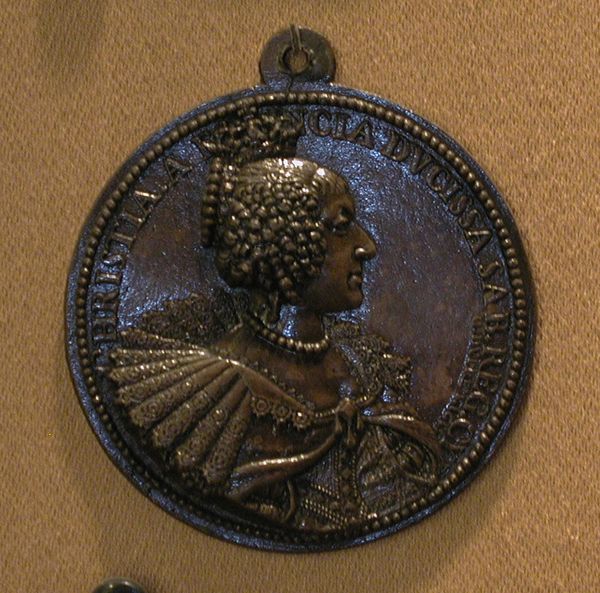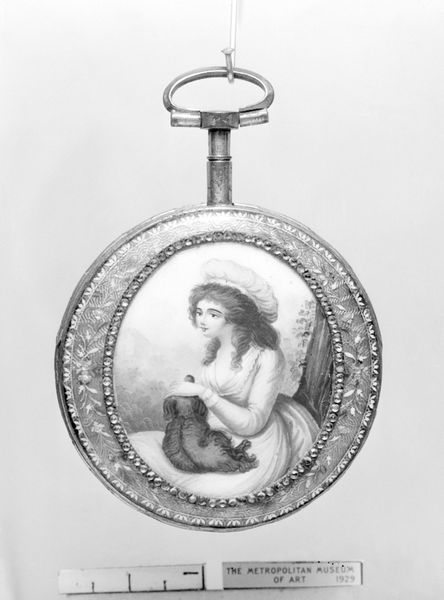
sculpture
#
figuration
#
sculpture
#
romanticism
#
men
#
jewelry
#
decorative-art
#
miniature
Dimensions: Height: 1/16 in. (0.2 cm); Diameter: 1 11/16 in. (4.3 cm)
Copyright: Public Domain
Curator: What strikes me first is the melancholy, almost tragic quality of the figure on this watch, her averted gaze, her slumped shoulders, does it affect you similarly? Editor: I see that immediately. But before we get carried away, let's contextualize it a bit. What we have here is a decorative pocket watch from the firm of Sandoz, Ami, et Fils. It likely dates between 1840 and 1855, and is now part of the Metropolitan Museum's collection. What makes it fascinating is not only its function, but also its dedication to romantic aesthetics within the medium of decorative art. Curator: Absolutely, it’s an object steeped in its historical moment. Beyond mere functionality, such watches spoke volumes about their owners. This image of the ‘Bohemienne’, seemingly etched into the case, gives me pause. ‘Bohemienne’ means ‘gypsy woman,’ and during this period the figure of the gypsy was associated with wildness, fortune telling and otherness. The watch could therefore carry connotations that are very ambivalent, embodying desires but also prejudice. Editor: Yes, that tension is precisely where the power lies! The romantic era loved its outsider figures, using them to symbolize both freedom and social anxiety. Given its exquisite detail and precious materials, it would’ve been worn, no doubt, by someone of means. This suggests to me an embrace of the ‘Bohemienne’ as something alluring. Curator: It’s intriguing to see such a sentiment inscribed onto a timepiece, linking it perhaps with fleeting moments. I note the delicate floral designs around the figure, they seems very Romantic, as though the 'Bohemienne' emerges from and dissolves back into them. The composition evokes both freedom and constraint at once. Editor: Precisely, a constant reminder of one's place, or perhaps aspiration towards something else. The Romantics had a real penchant for pushing up against the boundaries of class and acceptability, don’t you think? They certainly paved the way for more and more alternative thinking. It makes you wonder about the person who carried this piece. What did the figure of the ‘Bohemienne’ represent to them, or perhaps even to the firm of Sandoz, Ami, et Fils? Curator: Indeed. These portable pieces whisper hidden histories to us through symbolism that we are only just beginning to read, as images are encoded to carry emotional, cultural, and psychological meanings. Editor: Ultimately, it gives us much to consider when interpreting this beautiful, if ambivalent, little piece of Romantic material culture.
Comments
No comments
Be the first to comment and join the conversation on the ultimate creative platform.
